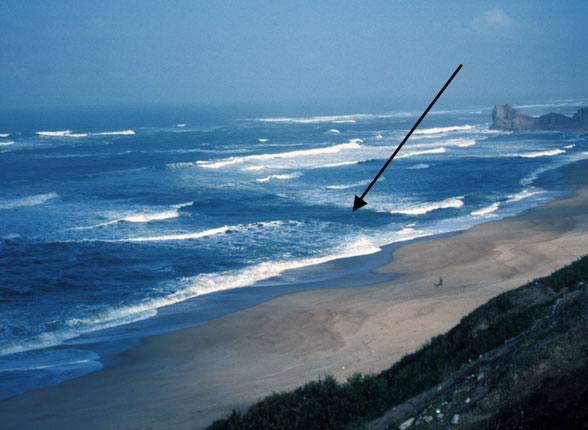“This past Saturday evening, my husband and I went to the beach. We go once a year. We waded out in waist high water and had fun jumping into the waves which were larger than usual. The life guards were flying the yellow flags also. We made sure we stayed away from the nearby fishing jetty. All of a sudden we couldn’t touch the bottom. We tried to swim but couldn’t. Then we found ourselves over rocks that were sharp and jagged. Probably left from the hurricane. We tried swimming more but it was very hard. It took a bit to realize we were in a rip current. The waves kept breaking over my head and I was getting tired. I started to panic. I kept calling my husband to save me. I was so scared…”
-Cindy, rip current survivor from the East Coast
Stories like this are far too common and far too real for many individuals who frequent coastal waters. While many people who find themselves swept into the currents of a rip survive to tell the story, over 100 drownings occur every year due to rip currents in the United States.
Rip currents, also (incorrectly) called rip tides or undertows, can occur during any time of the year in virtually any type of beach, even in the Great Lakes. In most environments, a normal surf condition can evolve into a rip current with little to no identifiable warning. Look for these clues to help identify a rip current:
- A channel of churning, choppy water
- An area having a notable difference in water color
- A line of foam, seaweed, or debris moving steadily seaward
- A break in the incoming wave pattern
If you have to ask yourself whether it is safe to go into the ocean, it is probably safe to avoid it. Because most coastal environments are unpredictable and currents can rapidly change within seconds, even the strongest swimmers should avoid entering rough surf waters. Although there may be a lifeguard on-duty, do not be over confident – many experienced lifeguards have drowned while attempting to save someone else from a rip current.
How to survive a rip current
If you happen to find yourself in a rip current DO NOT PANIC. Staying calm and moving with the flow of the current is your best chance of survival. Note the illustration below:

Don’t fight the current. Swim out of the current in a direction following the shoreline. When out of the current, swim towards the shore.
This article was adapted from the helpful and resourceful research of the National Oceanic and Atmospheric Administration (NOAA). For additional information visit NOAA’s Rip Current Awareness for general rip current information or the United States Lifesaving Association for advanced information about survival and rescue.
Be safe, have fun, and keep on paddling,
-Alex




